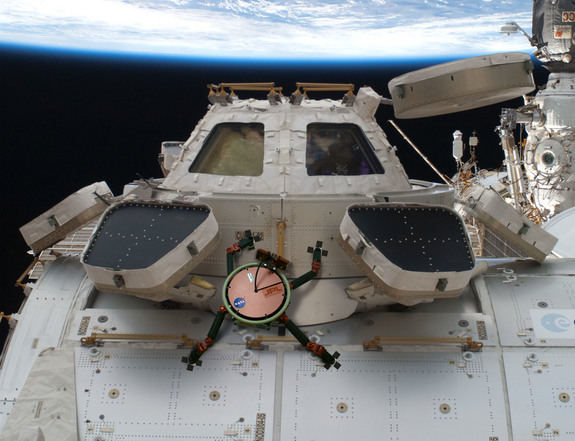-
Tips for becoming a good boxer - November 6, 2020
-
7 expert tips for making your hens night a memorable one - November 6, 2020
-
5 reasons to host your Christmas party on a cruise boat - November 6, 2020
-
What to do when you’re charged with a crime - November 6, 2020
-
Should you get one or multiple dogs? Here’s all you need to know - November 3, 2020
-
A Guide: How to Build Your Very Own Magic Mirror - February 14, 2019
-
Our Top Inspirational Baseball Stars - November 24, 2018
-
Five Tech Tools That Will Help You Turn Your Blog into a Business - November 24, 2018
-
How to Indulge on Vacation without Expanding Your Waist - November 9, 2018
-
5 Strategies for Businesses to Appeal to Today’s Increasingly Mobile-Crazed Customers - November 9, 2018
New gecko-inspired technology for climbing space robots
NASA’s Jet Propulsion Lab is working on many important pieces of technology, but perhaps none are more significant than the gecko-inspired tech that could one day be better than ducttape.
Advertisement
To try and fix this flaw, NASA has been looking to the animal kingdom. Geckos use thousands of very small hairs on their feet to hang upside down and on walls. The system uses the uneven spacing of electrons orbiting a nuclei of atoms to form positive and negative sides of the same molecule. The positively charged part attract the negative side of nearby molecules, and vice versa, which in turn causes “stickiness” that allows geckos to climb walls and walk across ceilings. Velcro has previously been used as a binding method, but the problem is that it requires a “mating surface”. The new material can soon be used on the global Space Station (ISS).
To develop the next generation of exploratory space robots, the US space agency has turned to geckos for “ultimate stickiness”. Just imagine how different Gravity would have been if we made this 10 years earlier.
Nasa Jet Propulsion Laboratory engineer Aaron Parness studied the way geckos use this physical property in depth, and reverse-engineered it to make a material that also uses tiny hairs to grip with more than 150 Newtons of force. The agency has now conducted over 30,000 tests with the material, each of which has proven effective. Despite the extreme conditions, the adhesive stayed strong.
The anchors are made now in footprints of 1 by 4 inches, 2 by 6 inches and 3 by 8 inches.
They would serve as an experiment to test the gecko adhesives in microgravity for long periods of time and as a practical way for astronauts to attach clipboards, pictures and other handheld items to the interior walls of the station. Astronauts would attach the object to a gripper’s mounting post by pushing together the two components of the gripper, NASA noted.
Parness and colleagues are collaborating with Nasa’s Johnson Space Centre in Houston on this concept.
The researchers have also affixed gecko-gripper feet to a climbing robot called Lemur 3, which can clamber over simulated solar panels and other spacecraft parts as a result.
This artist’s concept shows how a future robot called LEMUR (Limbed Excursion Mechanical Utility Robot) could inspect and maintain installations on the global Space Station.
There are numerous applications beyond the space station for this technology.
Advertisement
The California Institute of Technology in Pasadena manages JPL for NASA.




























